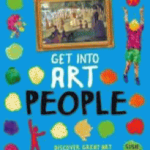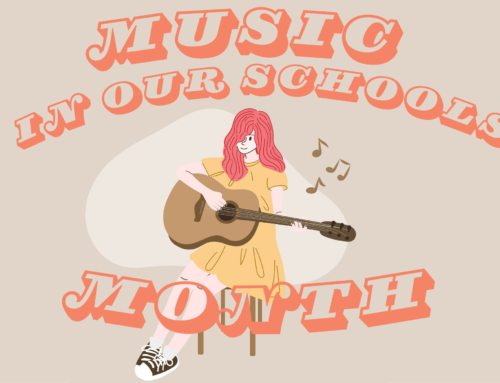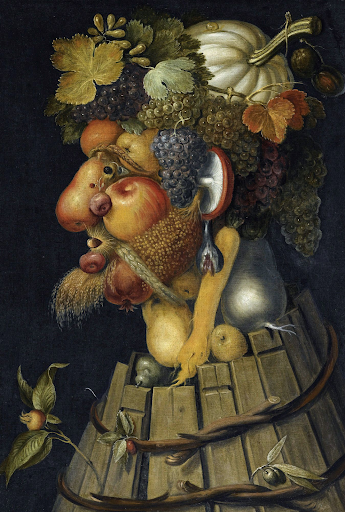
Have you looked at a grouping of objects and thought you could see a face? Well with Giuseppe Archimboldo that is what he was going for. One person may see a group of shells but look again a lady will be seen.
Who was Giuseppe Arcimboldo?
Arcimboldo was born in Milan in 1527 and is the son of another artist, Biagio Arcimboldo.
Like his father, he started his career designing imagery for stained glass windows.
Precise details of his early art training are unknown and have not been documented, but historians suggest that as a boy he was skillful and talented, making him a versatile artist. He could paint a number of religious art forms, including stained glass art and tapestry designs as well as fresco art.


Portraits that are believed to be Giuseppe Arcimboldo
What Did He Paint?
His remarkable skills won him a highly sought-after position of painting portraits of the most powerful families of his day in Milan. He became the Royal Painter in the courts of Italian emperors Ferdinand I, Maximilian II, and Rudolf II. He also served the court as a party planner, historical records indicate. This meant he helped organize lavish-themed balls.

The Seasons and The Elements
To celebrate the reign of Emperor Maximilian II, Arcimboldo presented two series of paintings: The Seasons and The Elements.
The Seasons series consisted of Spring, Summer, Autumn, and Winter and was created in 1563. He combined plants associated with a particular season to form a portrait of that time of year. The series was extremely popular and Arcimboldo reproduced it several times so the emperor could send versions to friends and important political figures.

Spring, 1563
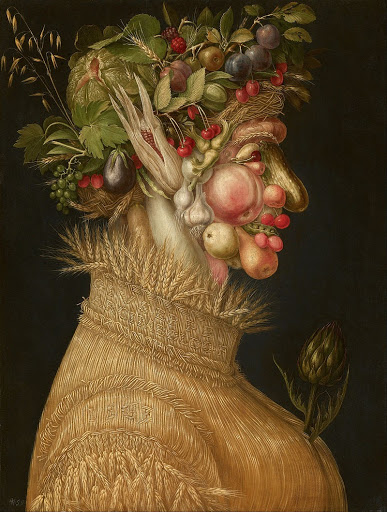
Summer, 1572
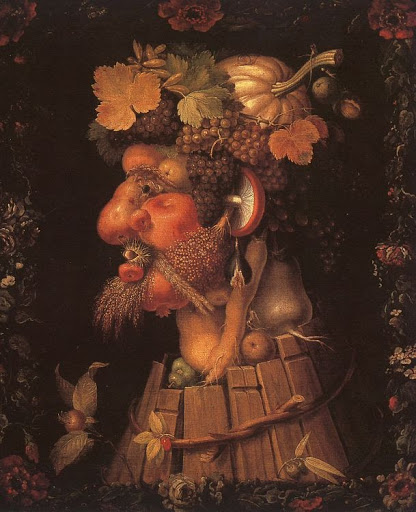
Autumn, 1573

Winter, 1573

Four Seasons in One Head, 1590
The series The Elements are “portraits” of the four elements Earth, Air, Fire, and Water.
Arcimboldo also made witty portraits of different professions, such as a librarian, jurist (judge), cook, and vegetable gardener, using objects associated with each occupation. Arcimboldo fills the paintings with dense details that come together to create a human form.
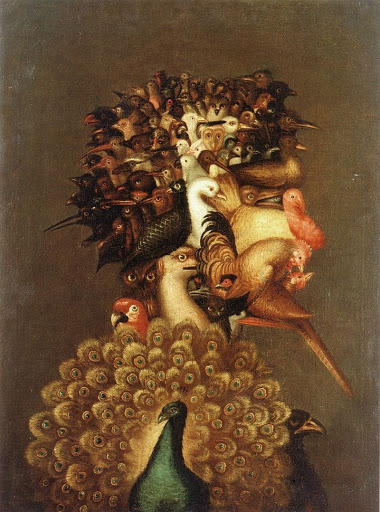
Air, 1566
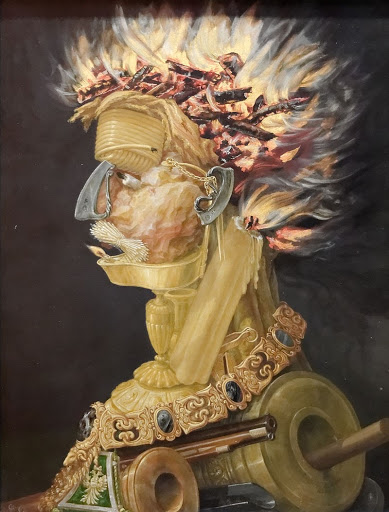
Fire, 1566
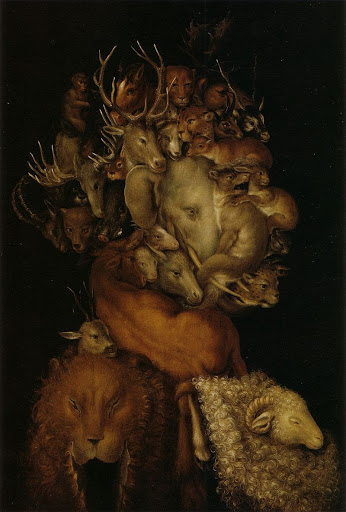
Earth, 1566
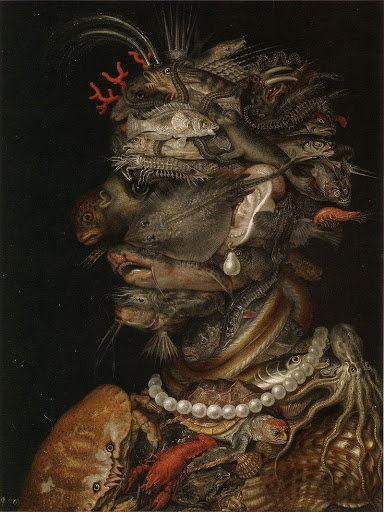
Water, 1566
Many of his paintings have been lost.
When the Swedish army invaded Prague in 1648, during the Thirty Years’ War, many of Arcimboldo’s paintings were taken from Rudolf II’s collection.
He died July 11, 1593 in Milan, Italy.

What do you see?
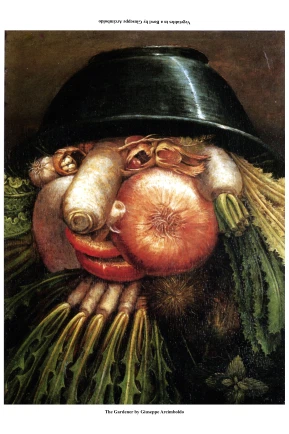
How about now?
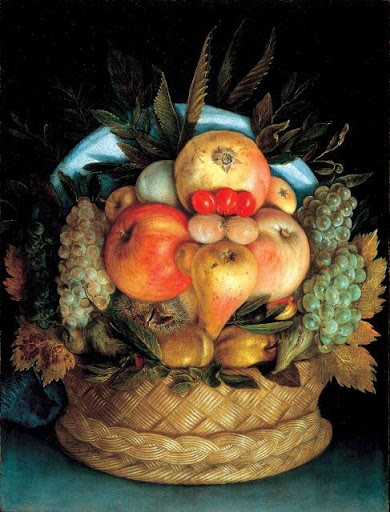
What do you see?
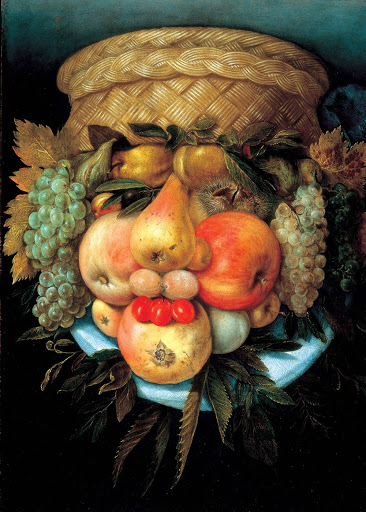
How about now?
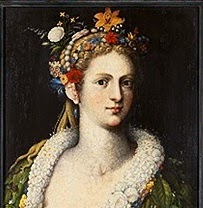
Flora meretrix, 1590

The Librarian, 1566
Resources
If you want to know more Giuseppe Arcimboldo and explore these fun titles:


